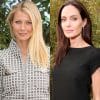
Exclusive installation of paper flowers in the Gardens room, which displays flower dresses alongside artworks from Monet to Marc Quinn. Photo credit: Dior
The space is covered with thousands of delicate white paper tendrils and vines draping down from overhead. Beneath them stand dresses in all inspiration of flowers: from a chiffon afternoon dress embroidered with cotton daisies to one couture cocktail dress covered in little green feather sprigs. Facing these dresses on one side of the wall, a Monet iris painting is hanging as if in conversation with the gowns.
This is the Dior Garden, one of many rooms in the 32,000-square-foot ‘Christian Dior: Designer of Dreams’ exhibition at the Musée des Arts Décoratifs in Paris. Celebrating 70 years of Maison Dior, it’s a big and bold staging of the brand’s story, and underneath that, a subtle retrospective study of the business in fashion. With over 300 haute couture dresses (many from the museum’s own collection) and 700 accessories across 23 themes curated by the museum’s director Olivier Gabet and Florence Müller, curator of textile art and fashion at the Denver Art Museum, it’s a one-hour minimum walk-through show. The superlatives continue … welcome to the largest Dior exhibition ever held, and the first in France since 1987.




